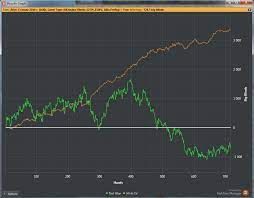Now we will demonstrate one very simple betting system. Note how the variance of the game affects the expected return of the betting system. Imagine two players, each of which came to a casino with 100€.
Each of them leaves the casino if their bankroll exceeds 500€ or if they lose all their money. We have simulated both players one million times, using a simple software routine with a random number generator.
- Player X bets 10€ on a number in roulette.
- Player Y places bets on color.
Player X left the casino as a winner in 14.8% of his attempts. His average "winning" bankroll was 648€ and he played 16 rounds in average. This means that the payouyt ratio (RTP) of his betting system was 95.19%.
The RTP of the betting system is calculated as a ratio of net wins to net losses. Net wins are calculated as 14.8% * (648€ – 100€). Net losses are calculated as 100€ * (100% – 14.8%). Therefore ((648€ - 100€) * 14.8%) / (100€ * (100% - 14,8%)) = 95.19%.
Player Y managed to win in only 5.15% of his attempts. His system had an average "winning" bankroll of 500€ and an overall RTP of 21.42%. On the other hand, player Y enjoyed playing for a much longer time – in average 274 rounds.
From this example you can clearly see that variance of the game significantly affects your chances to leave the casino as a winner. The payout ratio of player X's system was 4.4 times higher than the RTP of the system used by player Y.
